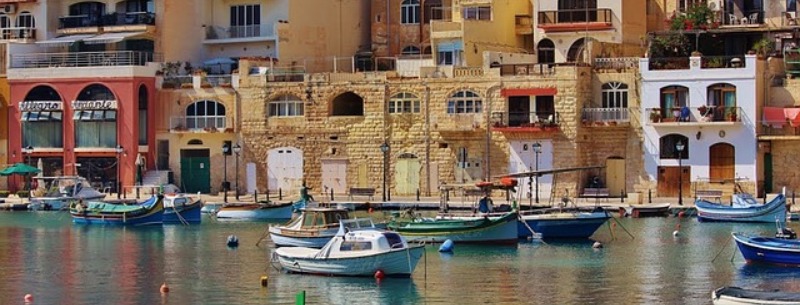Valletta, capital city of Malta
Known for its architectural beauty and massive fortifications, the small capital city of Valletta is one of the world’s most highly-concentrated historic areas. The UNESCO World Heritage site is especially bustling around the Triq il-Merkanti and Triq ir-Repubblika neighborhoods, but most of the city’s narrow streets are peaceful, quiet and perfect for strolling. With impressive views of two harbors, the city is a treat for travelers seeking respite from the urban chaos of other European capitals.
Visitors to Valletta are welcomed by the City Gate, called ìBieb il-Belt,î or the ìdoor to the city,î by locals. The original 16th-century gate has been replaced many times, and the most recent incarnation was created in 1964. The Italian modernism design has attracted much controversy, and will soon be replaced by yet another new gate.
Saint John’s Cathedral Interior Valletta
St. John’s Cathedral is one of the most outstanding sights in Valletta. Built between 1573 and 1577 and designed by the Maltese architect Girolamo Cassar, the church’s lovely exterior gives way to a downright impressive interior. The magnificent building is home to Caravaggio’s masterpiece ìThe Beheading of John the Baptistî and other treasures.
Malta was a longstanding military station for the British, and the Malta War Museum details the island’s strategic importance, especially during the Second World War. Housed in Fort St. Elmo, the museum’s highlights include a cross presented to locals for their heroism by King George VI. The ìGeorge Crossî is now featured on Malta’s flag.
Discover the country’s prehistoric and Neolithic treasures at the National Museum of Archeology. The oldest relics at the massive museum date back to approximately 7,000 years ago, when humans first arrived on the island. The museum is housed in the Auberge de Provence, a palace that once housed the ìlangue de Provenceî knights in the late 16th century.
Another impressive palace in Valletta is the Casa Rocca Piccola, which is still inhabited by descendants of the noble de Piro family. Visitors to the incredible villa are treated to an insider’s look at the wealthy patrician family’s life over the centuries, and the on-site museum has a delightful collection of traditional and period costumes.
Saluting Battery Upper Barrakka Gardens, Valletta
The Barrakka Gardens are another of the capital’s most beautiful sights. The Upper Barrakka garden is especially stunning, incorporating many monuments and statues, including one commemorating Winston Churchill. Built in the 17th century as a private garden for knights, the now-public space offers unbeatable views of Valletta’s Grand Harbor.
Msida Parish Church, Malta
The St. James Cavalier Center for Creativity is the city’s cultural hub, housed in one of the bastions near the city gate. Once gloomy and dark, the bastion has been transformed into an open, light-filled, contemporary cultural center launched in 2000 to celebrate the cinema, theater, music and art of the island. At night, the center puts on everything from operas and classical recitals to contemporary photography shows and jazz dance extravaganzas.
Valletta waterfront view
After catching a show, head to Republic Street to spend the night sipping espresso at intimate cafes, throwing back drinks at packed pubs or dining at one of Valletta’s finest restaurants. Both tourists and locals love the area for its laid-back ambiance, friendly crowds and many entertainment options.
Siege Bell, Valletta
Other must-see sights in the city include the Palace of the Grand Masters, home to the country’s parliament and president, the Malta Experience Museum, the 17th-century Manoel Theater, the National Library and the National Museum of Fine Art, home to pieces by Erardi, Caravaggio and Ribera.
Valletta Geographical Location
Valletta is on the eastern side of the largest island of Malta called Malta Island.
The population of Valletta is approximately 7,000 people.
Valletta Language
Maltese (which is heavily derived from Italian, English, and Sicilian) and English are the official languages of Malta.
Valletta Predominant Religion
- 98% Roman Catholic
- 2% Other
Malta’s official religion is Roman Catholic although freedom of religion is guaranteed and many of its laws are intertwined with Catholicism.
Valletta Currency
The Euro is the official currency of Malta.
Valletta Climate
Valletta experiences little rainfall during the year with the most occurring in the winter months. The summers are usually mild with only July and August deemed hot and the winters are cool and pleasant.
Valletta Main Attractions
- Casa Rocca Piccola
- St. John Co-Cathedral
- The Malta Experience
Other Attraction in Valletta
- Great Siege of Malta and the Knights of St. John
- The National War Museum
- Upper Barrakka Gardens
- Valletta Waterfront
